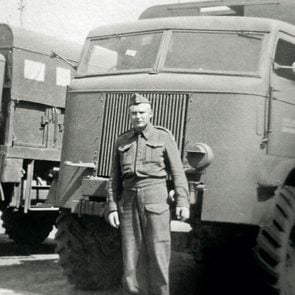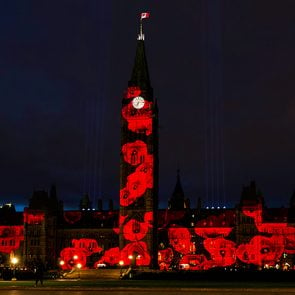This Was One of Canada’s Darkest Days During the Second World War
On July 25, 1944, 320 soldiers in Canada's Black Watch regiment faced three times as many German soldiers. Where was their backup?
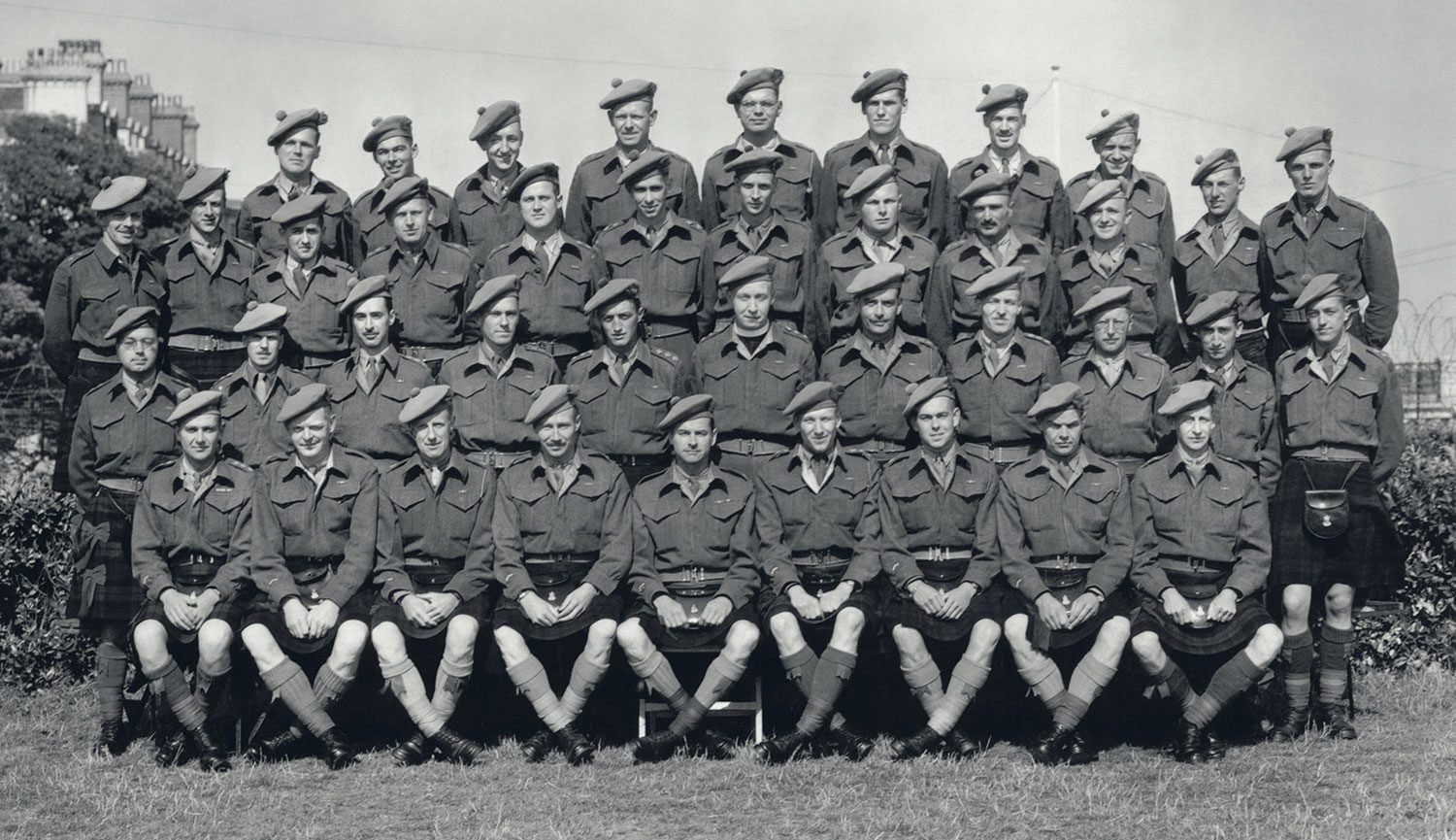
Verrières Ridge, Normandy, July 25, 1944, 0930 hours—H-hour
None of the men in the 1st Battalion of Canada’s Black Watch, the oldest Scottish Highland regiment of the country’s army, had seen the sun for a week when it pierced through a thin veil of overcast to beat down upon their position at the foot of Verrières Ridge. They quickly realized its rays did little to relieve the tension and gut-gnawing dread.
Each of the 320 hollow-eyed, grimy and grim Highlanders, all that remained of four battered rifle companies after a week-long baptism by fire, crouched in a muddied, vacant beet field, waiting for the next move. Their heavy woollen battle dress was smeared with mud, plaster dust, ash and splatters of blood. Sweat-soaked armpits, groins and necklines bore witness to their macabre dance with the unholy trinity of sweltering heat, intense combat and waves of soul-destroying fear.
The Highlanders came from the ranks of the citizen-soldier, men who volunteered to cross an ocean to fight someone else’s war. Known primarily as a Montreal regiment, the Black Watch had drawn its officers from the upper echelons of society and its soldiers from the working-class districts of the city. By the fifth year of the war, however, nearly one-third of the men came from all parts of Canada, the British Isles and Nazi-occupied Europe, and included a contingent of Americans who had joined to get in on the action.
Having learned to take nothing for granted in the moments before battle, some of the men fumbled with buttoned flies or webbed belts to relieve themselves. Others chose to suck back a freshly rolled cigarette or wolf down a slice of hardtack, washed down with a hidden stash of rum, to help steady nerves. Others silently muttered prayers or fondled rosary beads, while those suffering from the vagaries of crushing fatigue built up over the last seven days sat despondent and stone-faced, staring aimlessly. Racked by fatigue that clouded minds, impaired judgment and left them ragged and sapped of strength, some toyed with trading near-paralytic exhaustion for death.
The northern slope of Verrières Ridge, coated now with thick, tall wheat standing shoulder high, rose from beyond a curtain of grain. Shimmering impressively in the prevailing breeze, it accentuated the long, slow and gentle slope that led to the main line of German resistance concealed behind its crest.
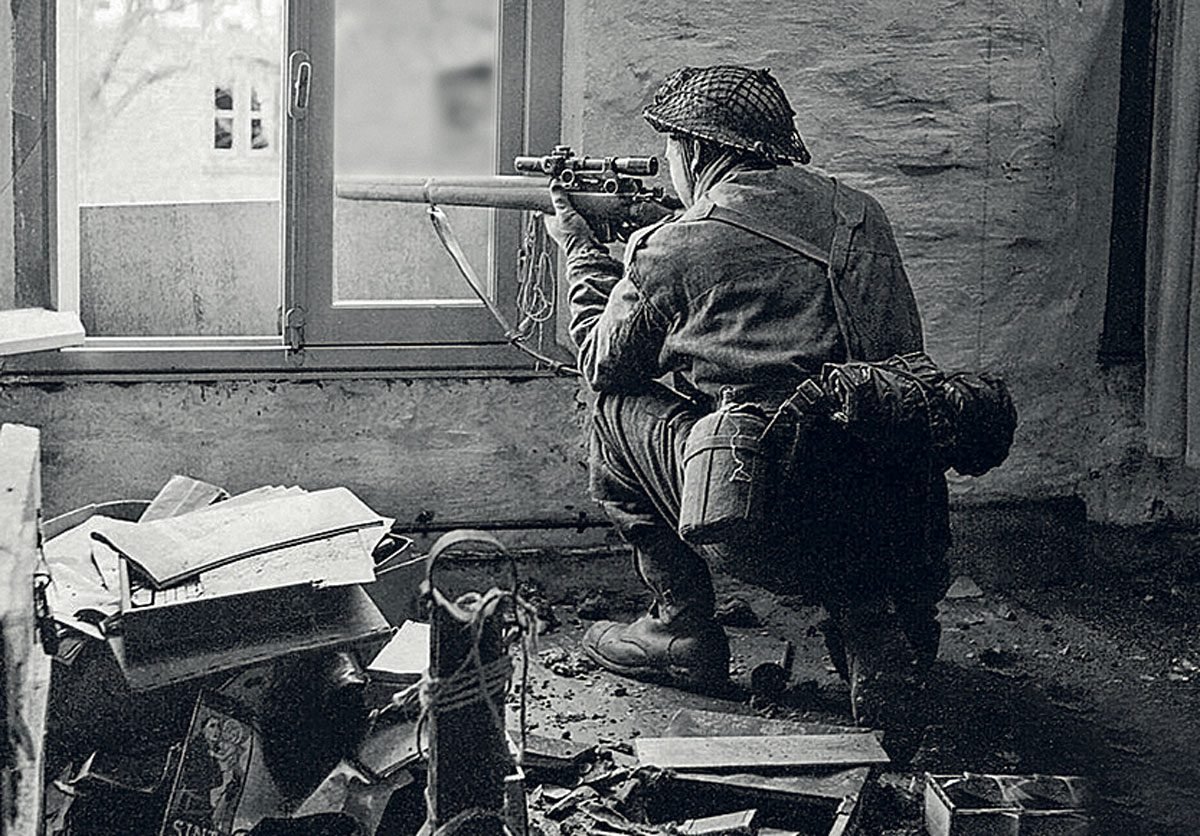
Behind the men lay the evidence of the last four gruelling days and nights. Nine hundred metres back sat Hill 61, a slight rise littered with singed wheat, smashed vehicles and hundreds of abandoned slit trenches. A constant cascade of shells had left the landscape pitted and scarred. The Black Watch had called the hill “home,” sitting exposed to enemy observation, enduring constant German sniper fire and the thunder of rocket, mortar and artillery shells that crashed down in torrents of white-hot steel and high explosive—all while fending off enemy patrols that used the blanket of wheat as cover to infiltrate their lines by day and by night.
In the shallow valley at the foot of Hill 61, spiralling columns of smoke eddied up from the ghostlike ruins of the conjoined towns of St. André and St. Martin. The mining and farming community, which had stood for centuries, had been reduced to rubble, strewn with debris and the scores of unburied dead from both armies. Periodically, muffled explosions from unattended fires erupted, punctuating the strange calm.
Off to their immediate right stood a small cluster of industrial buildings. The Canadians had mistakenly believed it was little more than a factory, unaware of the 365-metre mine shaft that burrowed under Verrières Ridge to the iron deposits below. There, German infantry took shelter from Allied artillery. To dislodge them, it took a liberal dousing of white phosphorus grenades and explosives crammed into ventilation ducts and pithead openings. Now, wall panels and sidings that once flashed in the sunlight stood scorched and blackened, riddled with bullet holes and pockmarked by shrapnel. Doors and window frames hung limply, ripped from their hinges by blasts that left mounds of shattered glass glinting in the sun, guide ropes severed, skips alight and trolleys overturned. In almost every corner, dead and dying German grenadiers lay slumped in grotesque angles on conveyor belts and refuse heaps, while others dangled from power pylons atop the nine-metre-high tipple used to load the iron deposits.
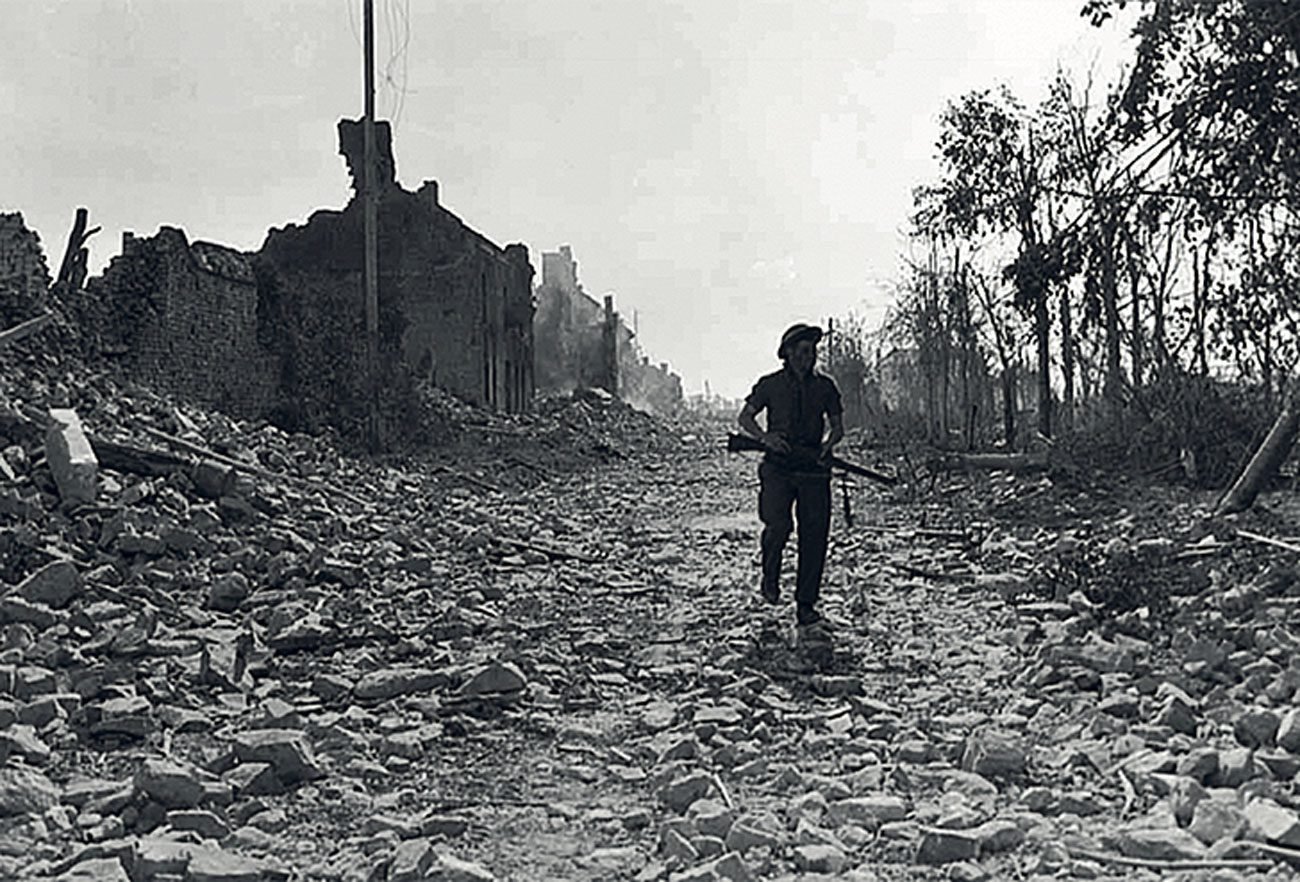
Not a single member of the Black Watch spoke in the beet field—or if they did, nobody remembered later what was said. Nightmares festering from the recent fighting bubbled to the surface and clashed headlong with the soldier’s bid to husband whatever fumes of courage remained for their final assault. They wondered in the backs of their minds if the attack would indeed go on. A series of nasty surprises and fatal encounters with the Germans in St. Martin, which cost the life of their commanding officer, Lt.-Col. Stuart Cantlie, had left the battalion four hours behind the schedule of the tightly timed corps plan code-named Operation Spring. Instead of pushing up the wide-open slopes of Verrières in the haze of the pre-dawn light, they now faced the unnerving prospect of a matinee performance.
None of the Canadians starting up the northern rise of Verrières knew that a veteran force roughly three times their size lay in wait behind the ridge. The villages south of the Norman capital of Caen featured fieldstone houses ringed by high dirt mounds crowned with dense hedges and thickets, all converted by the Germans into fortresses brimming with automatic weapons and anti-tank guns. Each “hedgehog,” as the defenders called them, formed part of a defensive web with interlocking fields of fire supported by artillery, rockets, mortars and battle groups (Kampfgruppen) from elite SS and army panzer divisions.
Getting up the wheat-covered rise that lay directly ahead, however, was their immediate problem. As with previous attacks that week, they expected to have a squadron of Canadian Sherman tanks in support, which would pepper the objective with direct fire from the cannon and machine guns. At the same time, a full regiment of field artillery would drop a steel curtain of high explosive shells 45 metres ahead that would “creep” towards the enemy as the Canadians closed on their line. Off to the right flank, smoke would shroud the battlefield in a great, thick mist, cutting off enemy observation from the heights across the Orne River to the west.
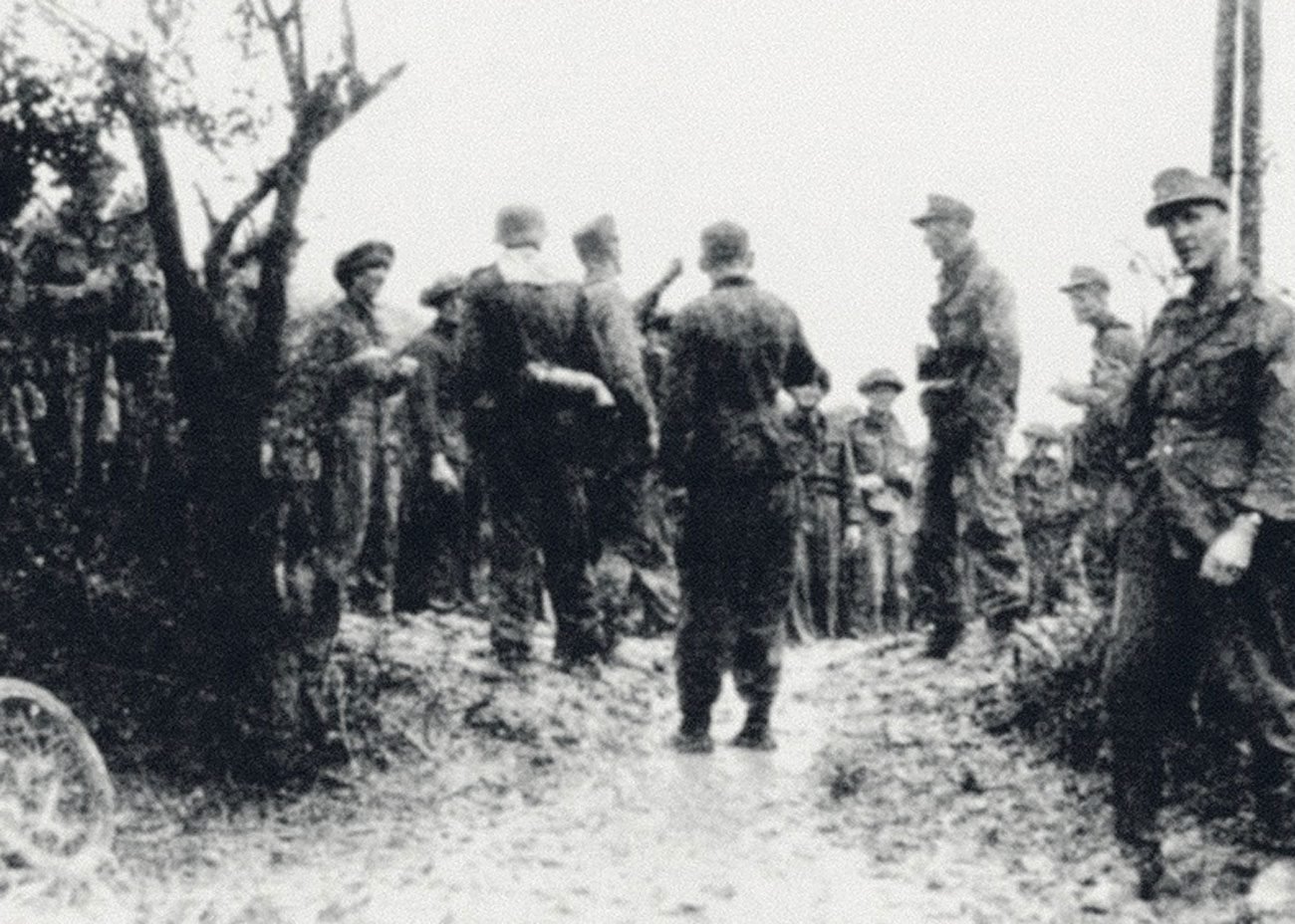
Yet by the time H-Hour arrived, none of these elements crucial for success had materialized. Operating under a direct order to press on immediately, and with regimental pride and honour at stake, Major Phillip Griffin, the 26-year-old acting commanding officer, reached back with his right arm and, after a slight pause, waved it forward. Upon his cry of “Black Watch, advance!” the men rose to their feet in unison.
Clomping through the mud with rifles across their chests at the ready and bayonets fixed, they dipped into the sea of wheat and discovered the going more trying than they’d imagined. Although they had a brief taste of fighting in this type of terrain earlier in the week, nothing compared with this labyrinthine crop blanketing Verrières Ridge.
Cutting telltale paths into the grain, the Highlanders struggled slowly up the gentle rise that in centuries past had hosted the armies of William the Conqueror and King Henry V but now masked a more sinister horde. Spread out in a loose configuration, and carefully concealed in trenches and weapons pits, Wehrmacht and SS panzer-grenadiers, snipers, machine guns, panzers and anti-tank guns, from some of the best units Hitler still had to offer, waited patiently, baiting their quarry into a carefully crafted killing field.
Slogging steadily through the wheat, prairie boys, longshoremen and lumberjacks strode side by side with the wealthy and the powerful. Caucasian, African Canadians and Indigenous men moving seamlessly with Jews and Gentiles, communists and capitalists, conservatives and liberals. The men maintained an unyielding faith and obedience to authority underscored by their devotion to principle, duty, friendship and the ironclad concept of “regiment.”
Forty-five metres into the field, a screen of high explosive and white-hot shrapnel arrived, erasing any notion of escape or withdrawal. In quick succession, German artillery observers, dug in on the crest and the heights across the Orne River valley, zeroed in on the three-metre whip antennas of the battalion’s wireless sets, waving madly above the wheat. In quick succession, the crackle of wireless traffic ceased as German mortar shells found their mark. With communications cut, the men in the Black Watch could not have been more alone.
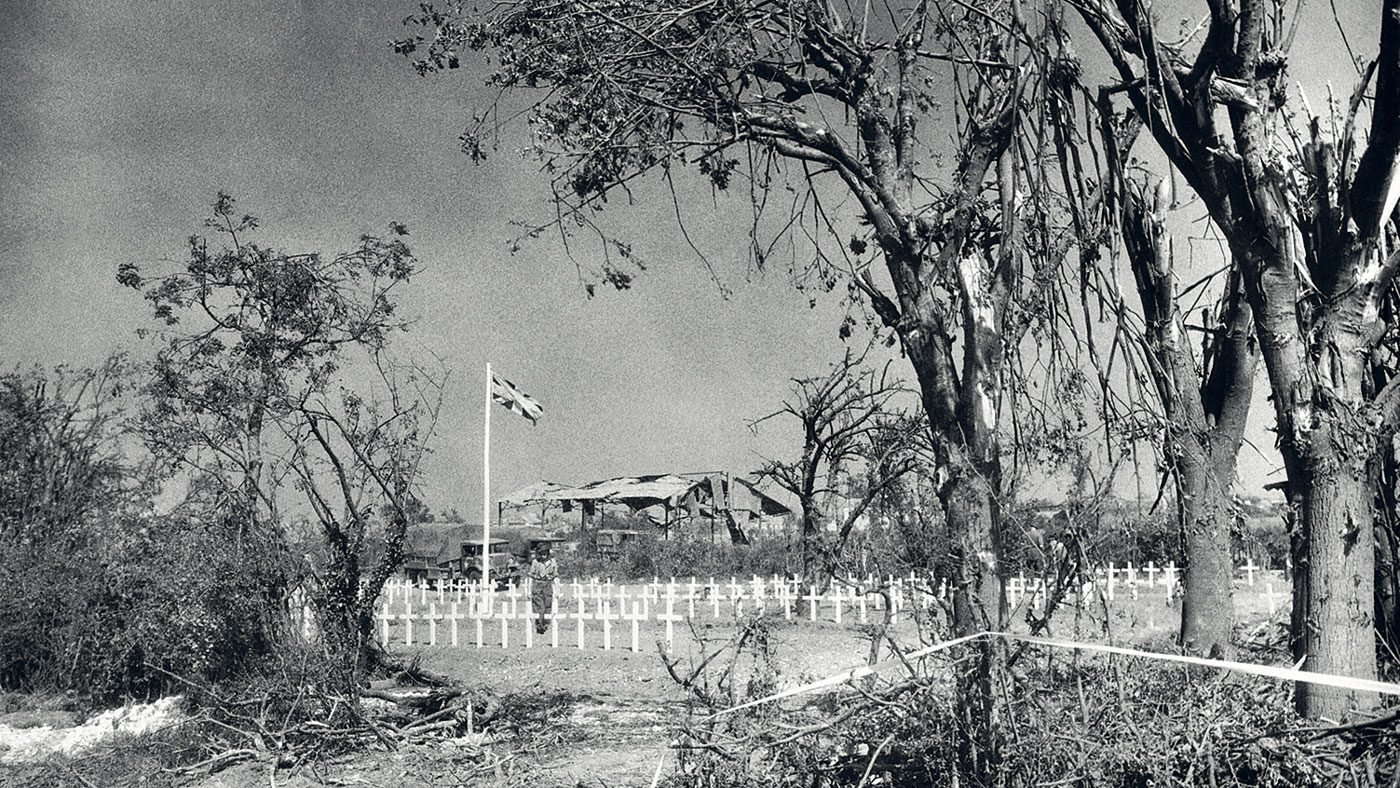
Ninety metres into the field, German machine guns, sitting snugly in camouflaged hides lining the flanks as well as atop the ridge, barked to life. Firing on fixed lines, their bright green-and-yellow tracers ripped into the men from three sides, cutting deadly swaths into the wheat with scythe-like precision, their rounds tearing flesh, tissue and tendons, leaving organs and bones shattered. The Highlanders, devoid of cover, bobbed and weaved in the chest-high grain, each man hoping not to draw the short straw.
One by one, however, they started to fall, swallowed by the wheat that rendered command and control almost nil. The cadence of the few soldiers still left on their feet, once calm and firm, now rose sharply. With no hope of stopping, of withdrawal or of mercy, the soldiers felt an increased sense of urgency. “Stay in step! Keep it together! Keep moving, men. Keep moving forward!”
Any trepidation built up in the moments before the attack had vanished, replaced now by a scorching rush of adrenalin. With their hearts now racing, throats burning and arteries pounding in their ears, only the cries from the wounded and the dying rose above the racket. Once smooth and controlled, their collective glide hastened in pace, turning rapidly into a frantic gallop as they slammed into the German picket halfway up the ridge. Hidden beneath the grain, any defender naive enough to offer surrender received no quarter when the Highlanders overran their slits.
German rocket and heavy artillery fire joined the choir just metres from the crest, and a hurricane of steel and fire greeted the mass scurrying through the wheat. The ordinarily pleasant scent of petrichor, kicked up from the soggy soil with each blast, mixed with the bleach-like stench of cordite, the charcoal-like smell of singed flesh and the sulphuric stink of melted hair. With every step, the ground shook; bodies and body parts flew in all directions, striking those still pushing forward up the ridge.
The only reward for the intrepid Highlanders who reached the crest came in the form of elite panzers and panzer-grenadiers, who opened fire at point-blank range. From beneath the grain, screeches from the wounded and dying, calling out in vain for a medic, a stretcher-bearer or their mothers. In short order, cries turned to whimpers and then, mercifully, irreversible silence.
Drenched in sweat and wild-eyed with rage and terror, the Highlanders who were still on their feet continued to press through the fire and the carnage, spurred on by desperate “do or die” calls from their acting commanding officer, whose repeated pleas to push on rose above the cacophony. “C’mon, men! Keep moving! We can reach the objective.”
Of the 320 men who made the assault up Verrières Ridge on that summer morning in late July 1944, no more than 20 reported fit for duty the next day. The fate of the rest came into sharp focus weeks later when Verrières Ridge finally fell to the Canadians in the second week of August. On July 25, the Black Watch had suffered 94 per cent casualties killed, wounded, missing and prisoner of war—a rate that put them on par with those suffered by the Royal Newfoundland Regiment on the tragic opening day of the Somme in 1916. Most of the 129 men who were killed in the assault are now buried in the Bretteville-sur-Laize cemetery outside the village of Cintheaux. The day would go down as the second costliest for the Canadian Army in the entire Second World War, after the bloodbath at Dieppe two years earlier.
Excerpted from: Seven Days in Hell, published in Canada by HarperCollins Publishers Ltd. © 2019 by David O’Keefe. All rights reserved.
Next, find out how Alberta’s Cree code talkers helped win WWII.

